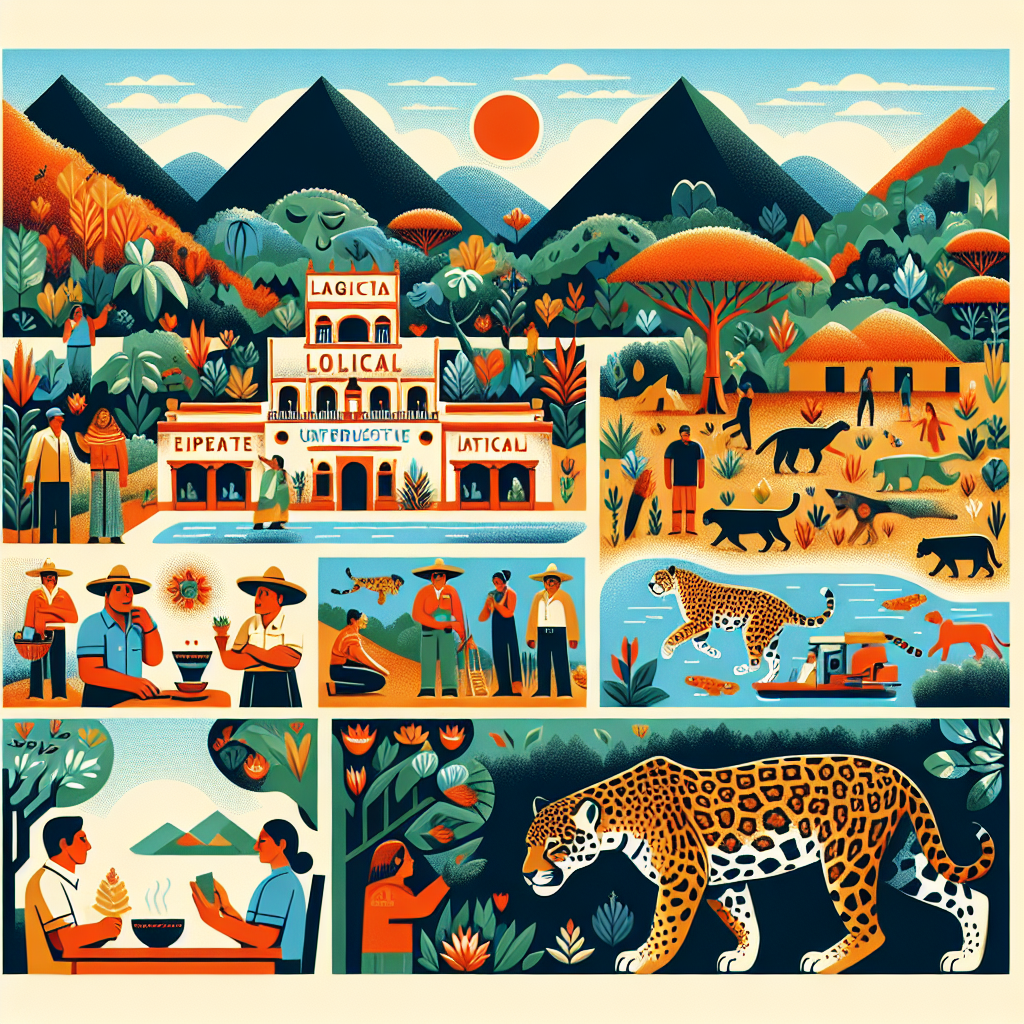The Importance of Local Communities in Jaguar Conservation in Mexico
Understanding the Jaguar’s Ecological Role
The jaguar (Panthera onca), as the largest feline in the Americas, plays a crucial ecological role as an apex predator. By maintaining the balance of various species within their habitat, jaguars contribute significantly to the health of ecosystems ranging from tropical rainforests to grasslands. Their presence indicates a balanced food web, making their conservation essential for environmental integrity and biodiversity in Mexico.
Historical Context and Threats
Historically, jaguars roamed widely across Mexico, but their population has significantly declined due to habitat destruction, hunting, and human-wildlife conflicts. The expansion of agriculture, urban development, and illegal wildlife trade have exacerbated this decline. The International Union for Conservation of Nature (IUCN) lists the jaguar as “Near Threatened,” emphasizing the urgent need for targeted conservation efforts. Effective conservation strategies must address these threats and engage local communities to create a sustainable future for these magnificent creatures.
Community Involvement in Conservation Efforts
Local communities are pivotal in the conservation of jaguars in Mexico for several reasons. Firstly, they possess traditional ecological knowledge that can inform conservation strategies. Their understanding of the landscape, animal behaviors, and ecological relationships provides valuable insights that biologists and conservationists can use to develop effective management plans.
Community-Based Conservation Programs
Numerous community-based conservation programs have been successfully implemented across Mexico, demonstrating the importance of local involvement. Organizations such as the Mexican NGO, Defenders of Wildlife, and the Wildlife Conservation Society, have collaborated with local communities to promote sustainable practices that benefit both the jaguar population and the livelihoods of those living in these areas.
1. Eco-Tourism Initiatives
Eco-tourism has emerged as a viable alternative to traditional, resource-extractive practices. Communities have established guided tours through jaguar habitats, promoting the idea that living animals generate more income than hunted ones. This model encourages locals to protect jaguar populations while creating economic opportunities. For instance, initiatives in areas like the Calakmul Biosphere Reserve and Chiapas have successfully linked conservation with community benefit, drawing visitors from around the globe.
2. Sustainable Agriculture and Land Use
Education about sustainable agricultural practices helps mitigate habitat destruction. Communities are encouraged to maintain forested areas alongside agricultural land, promoting biodiversity. Programs aimed at implementing agroforestry systems enable farmers to cultivate crops while preserving crucial habitats. This approach not only sustains local economies but also protects the ecosystems that jaguars inhabit.
Cultural Significance of Jaguars
In Mexico, jaguars hold deep cultural significance. They play important roles in the mythology and folklore of many indigenous groups, symbolizing power, strength, and spiritual connection. Recognizing this cultural importance fosters community pride and investment in conservation efforts. When locals see the jaguar as part of their heritage, it strengthens their commitment to protecting not just the species, but also the broader ecosystem it represents.
Conflict Mitigation Strategies
One of the significant challenges in jaguar conservation is human-wildlife conflict, particularly as jaguars might prey on livestock. Addressing this issue is critical for fostering positive relationships between communities and wildlife. Various strategies have been implemented, including:
1. Non-Lethal Deterrents
Providing farmers with non-lethal deterrent tools such as guard animals, fencing, and noise-making devices can reduce the incidence of predation. This approach allows communities to coexist with jaguars without resorting to lethal measures. Educational workshops can guide farmers on effective techniques to protect their livestock while fostering tolerance for the jaguar’s ecological role.
2. Compensation Programs
Establishing compensation programs for livestock losses can mitigate the financial burden on farmers. When communities receive fair compensation, their willingness to coexist with jaguars increases. Effective communication and transparency in these programs are essential to cultivate trust between conservationists and local stakeholders.
Collaboration with Indigenous Communities
Collaborating with indigenous communities is essential in jaguar conservation. These groups often manage large tracts of land crucial for jaguar habitats. Their traditional land management practices are often sustainable and can contribute to the preservation of rich biodiversity. Involving them in conservation planning and decision-making processes ensures that conservation strategies respect their rights and incorporate their knowledge systems.
Joint initiatives such as the Jaguar Corridor Project in the Selva Maya region exemplify successful collaborations. These projects focus on creating ecological corridors that connect fragmented habitats, allowing jaguars and other wildlife to thrive while engaging indigenous communities in land stewardship.
Monitoring and Research
Local communities play an essential role in monitoring jaguar populations and assessing their health and behavior. Citizen science initiatives empower locals to participate in data collection, giving them ownership of conservation efforts. Training community members to use camera traps and other monitoring equipment engages them in the scientific process while contributing valuable data to researchers.
Policy Advocacy and Conservation Legislation
Communities can leverage their voices in advocating for stronger conservation policies. Engaging with governmental agencies to promote wildlife protection laws and land management can ensure long-term support for jaguar habitats. Awareness campaigns led by local organizations can garner public interest and pressure authorities to act, leading to better enforcement of environmental laws.
Moreover, creating wildlife protection ordinances at the local level can empower communities to take charge of their conservation efforts. When local governance structures incorporate conservation mandates, there is a greater likelihood of sustainable practices being maintained.
Conclusion
The integration of local communities in jaguar conservation is not just beneficial; it’s essential. Their unique knowledge, cultural ties, and vested interests in ecological health make them indispensable allies in the fight against the challenges threatening jaguar populations. By fostering an environment of collaboration, sustainability, and respect, Mexico can lead the way in the global effort to conserve this extraordinary species while simultaneously enriching the lives of its people.







